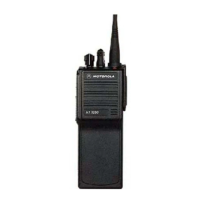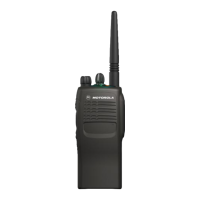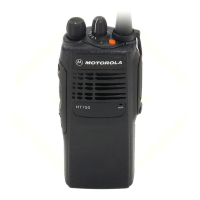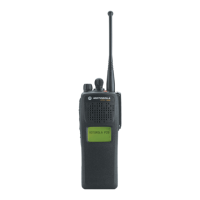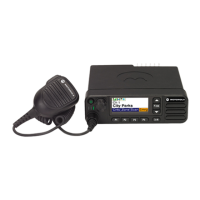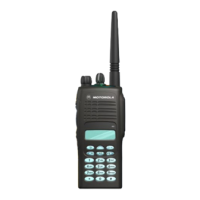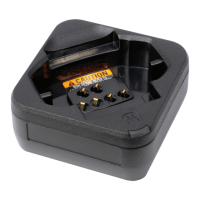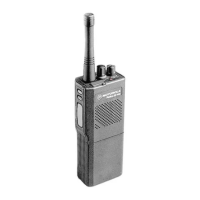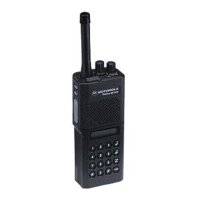(2) Refer to Figure 40-16 and use a small heat-
focus head to distribute heat over the area
occupied by the three solder tabs until the
solder softens.
(3) Carefully lift the RF switch assembly away
from the rf board. Notice that the RF switch
circuit board remains attached (soldered) to
the RF board.
(4) Using the same heat-focus head as in step
(3), unsolder the RF switch circuit board
and remove it from the RF board using
forceps.
(5) In the RF switch circuit board area, reflow
all the solder pad areas on the main RF
board such that similarly shaped pads have
uniform solder heights. Add or remove sol-
der as required. Clean the RF board
thoroughly. Then swab on a minimum
amount of flux to each of the solder pads.
To replace the RF switch:
(1) Place the RF switch assembly on the RF
main board and gently heat. Visually
inspect to make sure no flux migrated onto
the gold plated areas of the RF switch
board. The guide pins should provide self
alignment between the two circuit boards.
Visually inspect the plastic switch housing
to ensure that it has not warped due to
overheating.
(2) While holding the RF switch bracket firmly
against the RF board:
• VHF and UHF radios - solder the two
leads of the housing to the solder pads
on the RF board.
• 800MHZ and 900MHz radios - bend the
two tabs around the side of the RF
board as close to the board edge as
possible to hold the bracket down
tightly.
(3) Insert the new RF switch spring and RF
switch piston into the RF switch assembly.
The contacts of the piston should be facing
the gold-plated pads of the RF switch
board. Once the spring and piston are
inserted into the RF switch, they will be
retained by the switch.
d. Chip Components
Use either the RLN-4062 Hot-Air Repair Station
or the Motorola 0180381B45 Repair Station for
chip component replacement. When using the
0180381B45 Repair Station, select the TJ-65
mini-thermojet hand piece. On either unit, adjust
the temperature control to 700 degrees F. (370
degrees C), and adjust the airflow to a minimum
setting. Airflow can vary due to component den-
sity.
(1) To remove a chip component, select a
hot- air hand piece and position the nozzle
of the hand piece approximately 1/8”
(0.3cm) above the component to be
removed. Begin applying the hot air. Once
the solder reflows, remove the component
using a pair of tweezers. Using solder wick
and a soldering iron or a power desoldering
station, remove the excess solder from the
pads.
(2) To replace a chip component using a
soldering iron, select the appropriate
micro-tipped soldering iron and apply fresh
solder to one of the solder pads. Using a
pair of tweezers, position the new chip
component in place while heating the fresh
solder. Once solder wicks onto the new
component, remove the heat from the sol-
der. Heat the remaining pad with the
soldering iron and apply solder until it wicks
to the component. If necessary, touch up
the first side. All solder joints should be
smooth and shiny.
(3) To replace a chip component using hot
air, select the hot-air hand piece and reflow
the solder on the solder pads to smooth it.
Apply a drop of solder paste flux to each
pad. Using a pair of tweezers, position the
new component in place. Position the hot-
air hand piece approximately 1/8” (0.3cm)
above the component and begin applying
heat. Once the solder wicks to the compo-
nent, remove the heat and inspect the
repair. All joints should be smooth and
shiny.
25
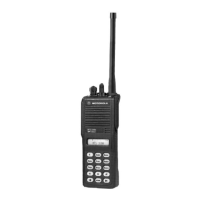
